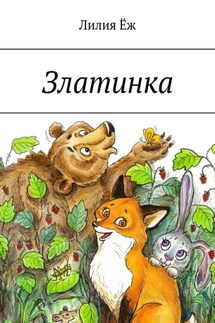Fairy Tales for Fun and Wisdom - страница 6
Moral:
In the darkest times, beauty brings hope.
Notes:
– Perched – sat or rested on something high (сидела на высоте).
– Restless – unable to stay still or calm (беспокойный).
– Echoed – repeated a sound as it bounced back (эхо разнеслось).
– Surfaced – came to the top of the water (всплыли).
The Clockmaker and the Broken Time (Часовщик и сломанное время)
In a small Bavarian village, there lived a clockmaker named Otto. He was famous for his beautiful cuckoo clocks, each one a masterpiece. But one day, the largest clock in the town square broke. Its hands stopped moving, and the cuckoo refused to sing.
The villagers panicked. “Without the clock, how will we know when to open the market or ring the church bells?”
Otto examined the clock and found the problem: the main spring was cracked. But no matter how hard he searched, he couldn’t find a replacement.
One night, Otto sat alone in his workshop, staring at the broken spring. Suddenly, a tiny voice called out, “Use me.”
He looked down and saw a small, bent nail on his workbench. “You? You’re too weak to hold such a great clock together!”
The nail replied, “Perhaps. But you won’t know unless you try.”
Otto hesitated but placed the nail where the spring had been. When he wound the clock, it ticked! Slowly, the hands began to move, and the cuckoo sang once more.
The villagers cheered as Otto announced, “Sometimes, even the smallest things can fix the biggest problems.”
Moral:
Never underestimate the power of small solutions.
Notes:
– Masterpiece – a work of outstanding skill or art (шедевр).
– Spring – a coiled piece of metal that powers a clock (пружина).
– Workbench – a sturdy table used for working on projects (рабочий стол).
– Ticked – made the regular sound of a working clock (тикал).
The Bridge of a Thousand Lanterns (Мост тысячи фонарей)
In an ancient Japanese village, there was a long bridge that stretched over a wide river. Every year during the Lantern Festival, the villagers lit the bridge with a thousand glowing lanterns to honor their ancestors.
One year, a powerful typhoon destroyed the bridge, leaving the villagers heartbroken. “Without the bridge, how can we honor the spirits?” they cried.
A young girl named Hana stepped forward. “We can still honor them,” she said. “Let’s each make a small raft and place our lanterns on the water.”
At first, the villagers doubted her idea. But one by one, they followed Hana’s example, placing their lanterns on tiny wooden rafts.
That night, the river shone with a thousand lights, drifting peacefully downstream. The villagers watched in awe as the lanterns seemed to dance, creating a path of light that stretched farther than the bridge ever had.
From that year on, the river became the new home for the Lantern Festival.
Moral:
When one path is lost, another can be created.
Notes:
– Lantern – a portable light often made of paper (фонарь).
– Typhoon – a tropical storm (тайфун).
– Raft – a flat structure for floating on water (плот).
– Drifting – moving slowly with the current (плывущий по течению).
The Iceberg That Dreamed of the Tropics (Айсберг, который мечтал о тропиках)
Far in the Arctic, an iceberg named Kira floated among her icy siblings. She dreamed of warmth and color, imagining lush green forests and golden beaches.
One day, a strong current pulled Kira southward. The other icebergs warned her, “You’ll melt and disappear if you leave!”






